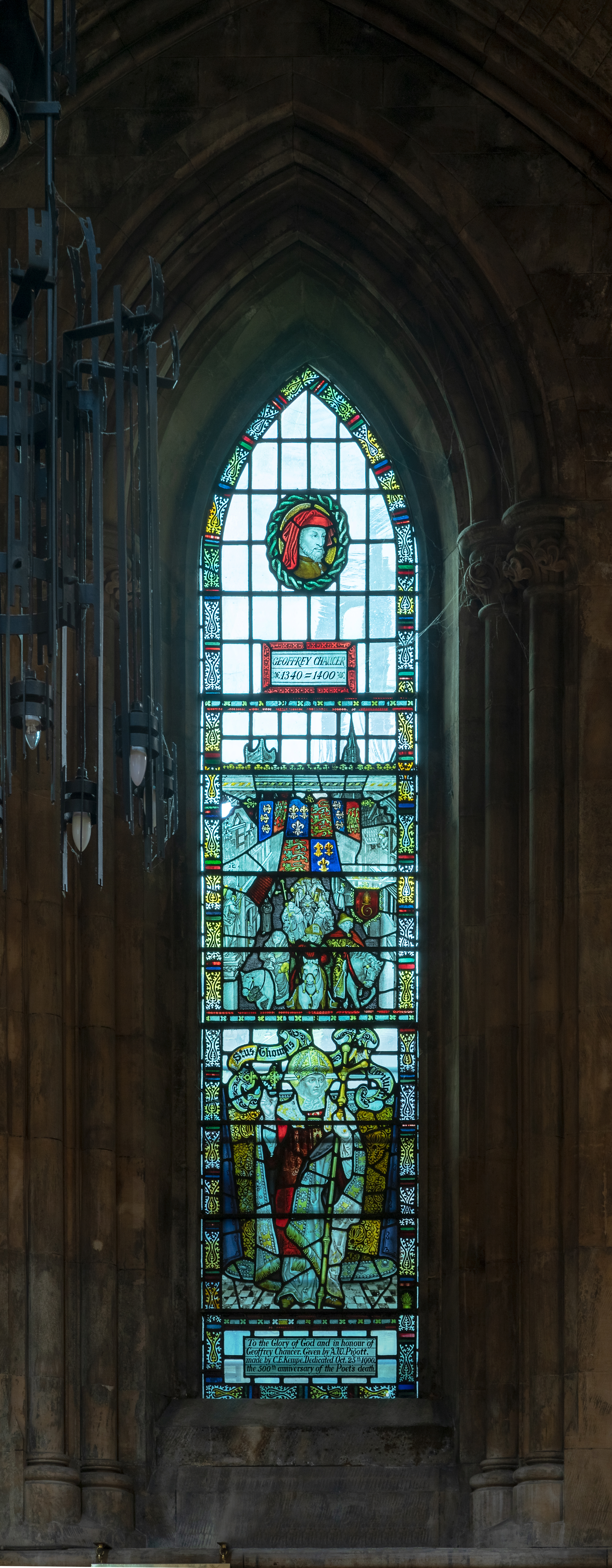Windows 1 – 8 in the North West wall and North Aisle comprise a series of windows by C E Kempe & Co (1866-1934) which form an essential part of Sir Arthur Blomfield’s new nave and transept, completed in 1897.
Every window features a memorable individual with special links to Southwark. Note the finely painted portrait heads in windows 2-8.
1. St Augustine, Bishop of Hippo, near Carthage in Tunisia (395-430). He holds his episcopal staff, and a flaming heart, the symbol of faith. In St Augustine’s name the Canons Regular of the Augustinian Order were established in 1106-07. The Priory belonged to that Order.
In the bottom panel is a copy of St Augustine’s ‘De Civitas Dei’, (The City of God).
Maker: Charles Eamer Kempe 1903. Kempe’s maker’s mark, a wheatsheaf, is low in the left border.
Note: The ‘pearls’ and complex painting on the robes, for which Kempe was renowned. The flame has been painted with silver stain, from which ‘stained glass’ gets its name.
Given by the parishioners in honour of St Augustine and in memory of James Frederick Field, d.1902, an official of this church.
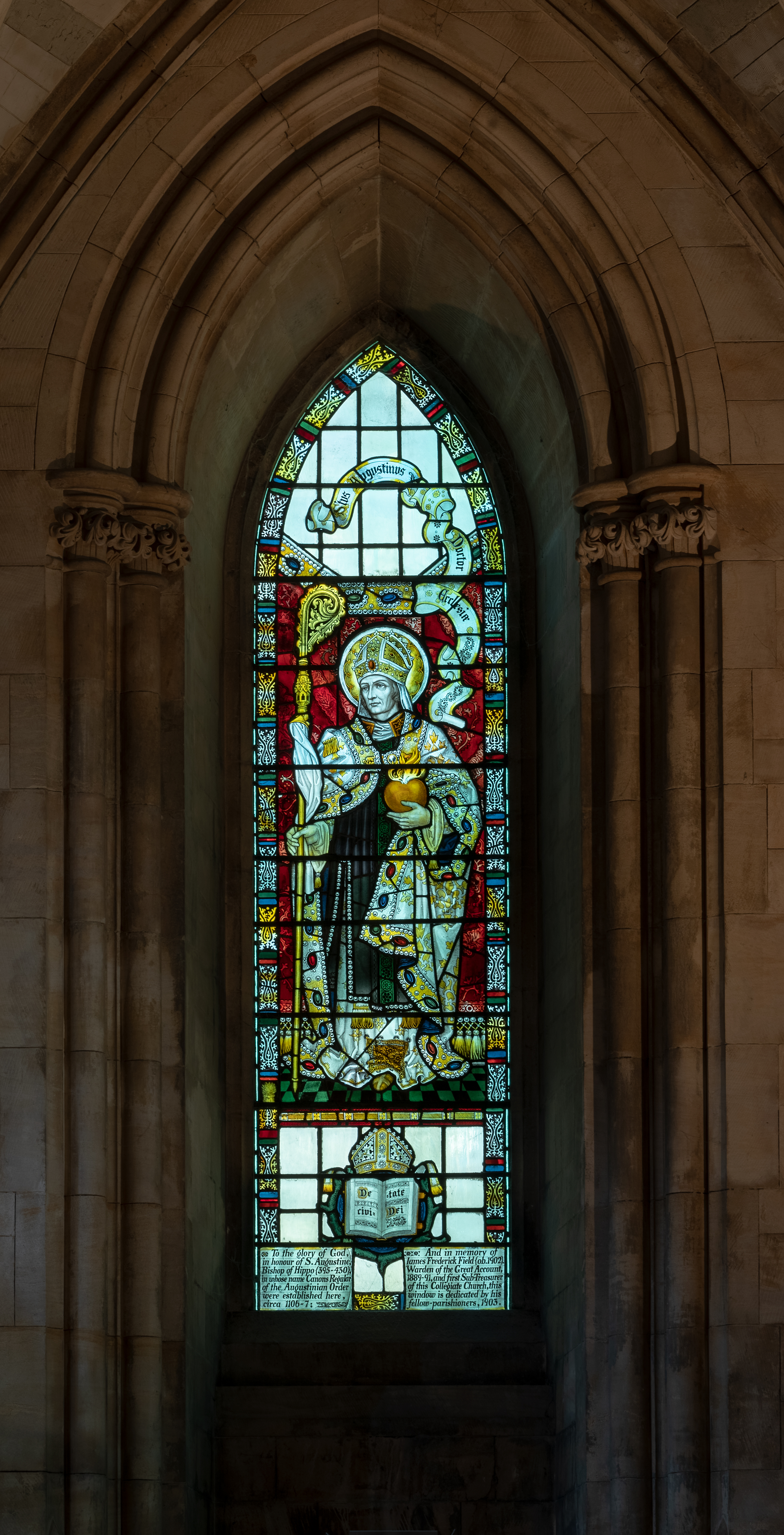
2. Oliver Goldsmith (1728-1774), poet and novelist, worked in Southwark as a young medical assistant. He is remembered here as ‘a wayward genius who practised medicine on Bankside without obtaining much in the way of fees’. Below his medallion portrait are depicted the Nativity illustrating Goldsmith’s theme of family life, and St Patrick, a reference to his Irish origin. Goldsmith is best known for his powerful poem ‘The Deserted Village’ inspired by land seizure in 18th Century Ireland.
Maker: Charles Eamer Kempe 1910. Kempe’s maker’s mark, which is in this case a wheatsheaf surmounted by a tower, is low in the left border. The presence of the Tower indicates that the window postdates 1907, when Walter Tower took over the firm.
Erected by parishioners and friends of St Saviour’s in memory of Canon William Thompson DD, d.1909, last Chaplain and first Rector of St Saviour’s Church, and Canon and Chancellor of the Cathedral.
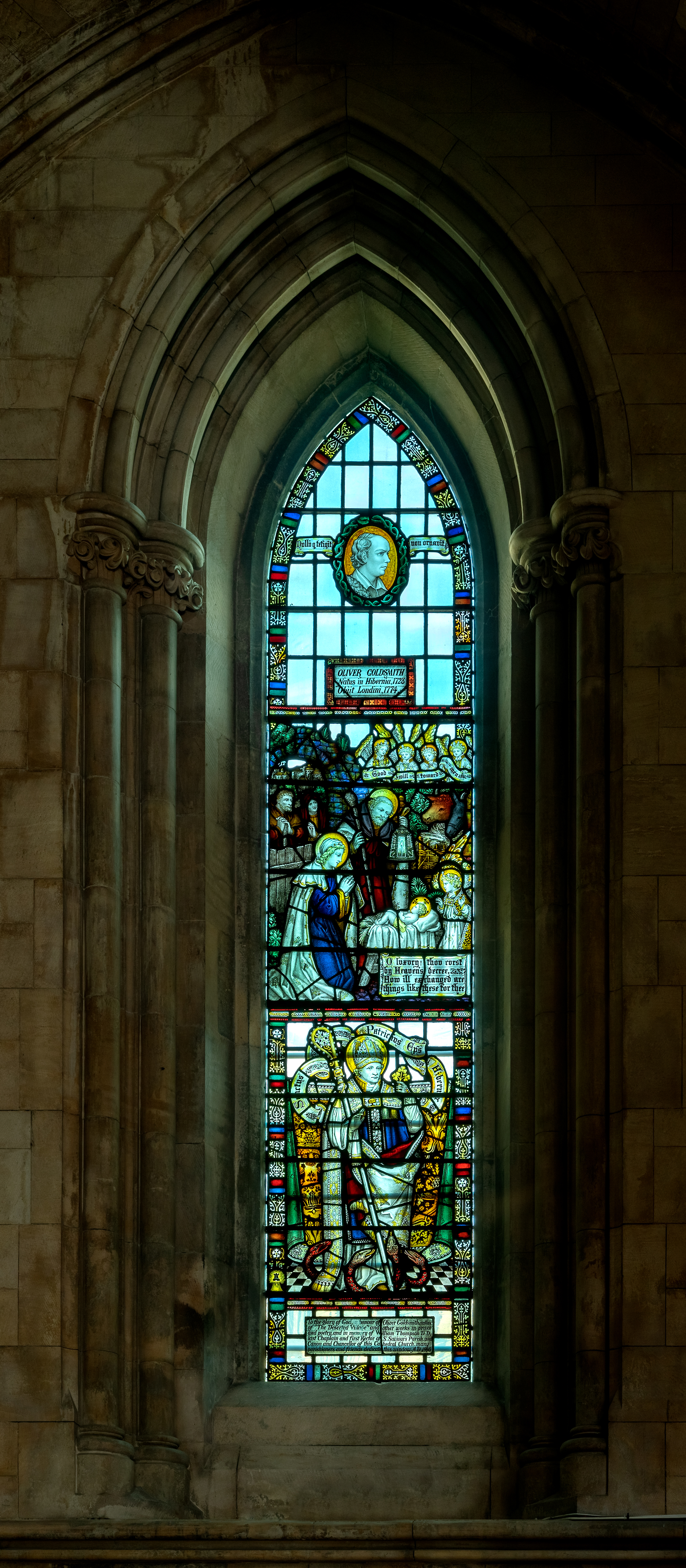
3. Samuel Johnson (1709-1784), author, lexicographer, critic and conversationalist, was a regular visitor to the Borough where he frequented the Anchor Inn on Bankside and became a friend of the Thrale family, owners of the brewery which stood to the West by Southwark Bridge. Below his medallion portrait is Christ before Pilate and an ancient anagram ‘Quid est Veritas? Vir est qui adest’. (What is Truth? It is the man who is before you).
Below, King Solomon, father of wisdom and knowledge, is portrayed reading a book.
Maker: Charles Eamer Kempe 1907. Kempe’s maker’s mark, a wheatsheaf, is low in the left border.
Given by Mrs G Macaulay Booth in memory of Stephen Edmund Spring Rice, d. 1900.
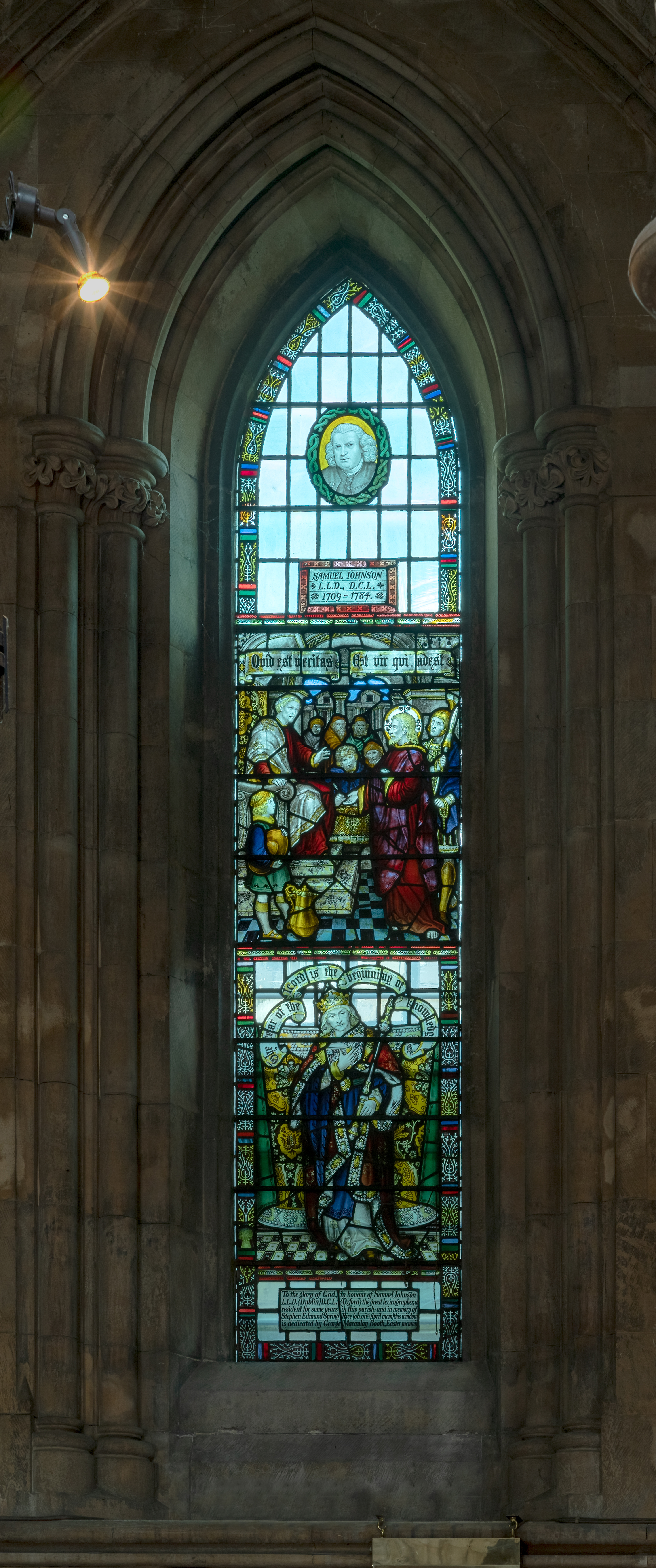
4.Henry Sacheverell (1674-1770) was Chaplain at St Saviour’s from 1705. Dr Sacheverell was a supporter of the Tory party who became noted for his fiery sermons attacking the Whig government. He was tried, found guilty and banned from preaching for three years. After the Tories returned to power, Sacheverell returned to St Saviour’s, preaching his first sermon from the text ‘Father forgive them…’
Below the medallion portrait of Sacheverell, the upper panel shows St Paul pleading his cause before Agrippa, and in the lower panel St Paul is shown with sword and book, his emblems, carrying a copy of his second Epistle to the Corinthians; he is surrounded by a scroll bearing the words from Sacheverell’s famous sermon ‘In peril amongst false brethren’ which led to his trial and ban.
Maker: Charles Eamer Kempe 1906. Kempe’s maker’s mark, a wheatsheaf, is in the left border.
Given by Edgar Horne and Mrs Laura Corcoran in memory of their father who was buried in the retrochoir in 1848.
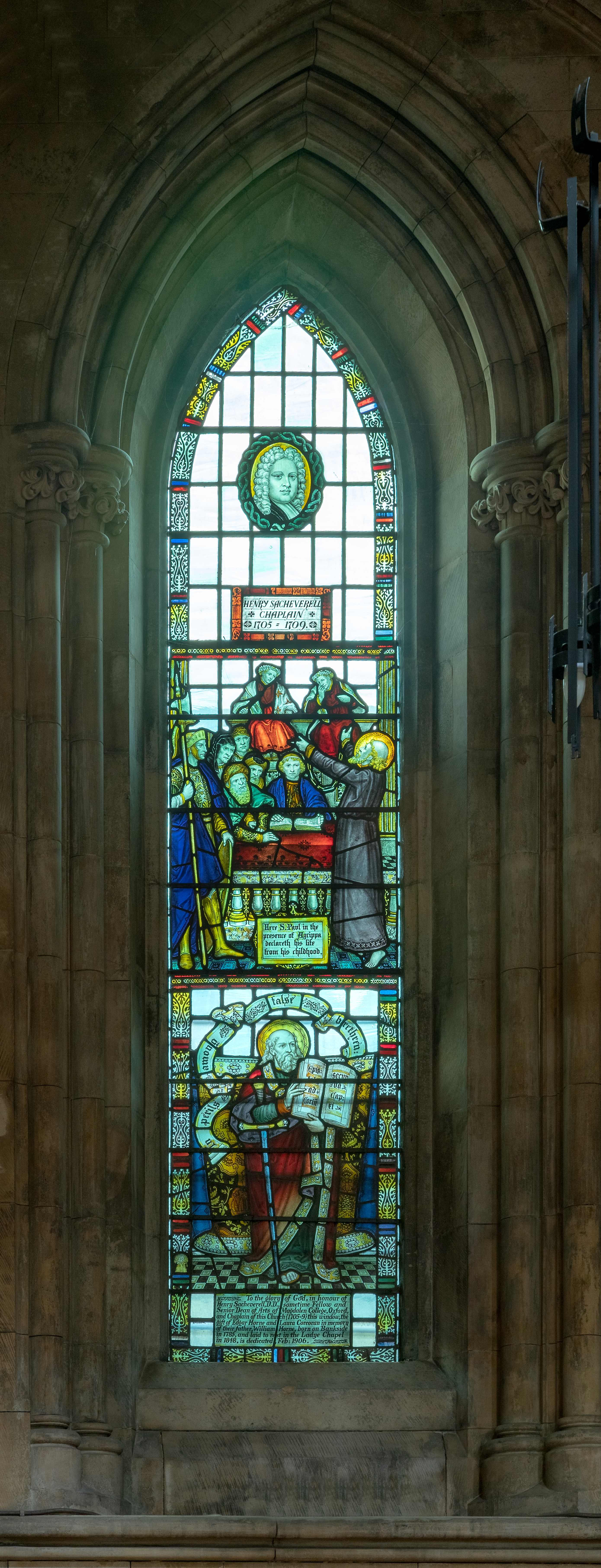
5. Alexander Cruden (1702-1770) was a Scottish bookseller. In 1736 he completed ‘Cruden’s Concordance’ which lists, links and labels all the words in the King James Bible. It is still to be found in many vicarages and is used by students of the Authorised Version of the Bible. Cruden was buried in a non-conformist graveyard in Park Street to the West of the cathedral, where housing now stands.
Below the medallion portrait are shown leading representatives of the Old and New Testaments: Moses for the Law, Isaiah for the Prophets, St John for the Gospels and St Paul for the Epistles. The lowest panel contains the figure of Timothy, a disciple of St Paul, who like Cruden was renowned for his knowledge of the Scriptures.
Maker: Charles Eamer Kempe 1901. Kempe’s mark, a wheatsheaf, is in the bottom left corner.
Note: The fine detail in the painting of the screen.
Given in memory of Henrietta Francis, d. 1900, by her son W.H. Francis, a Rector’s Warden.
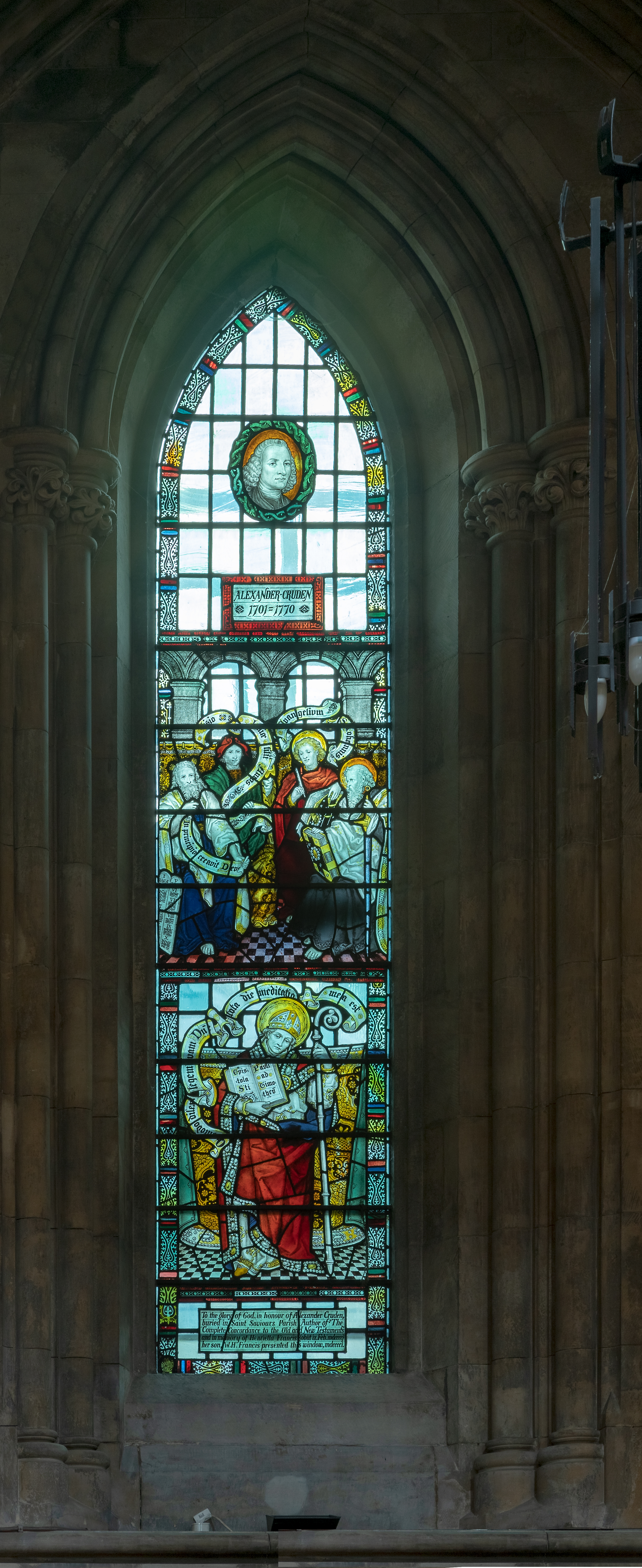
6. John Bunyan (1628-1688) was a Baptist preacher and author of ‘The Pilgrim’s Progress’ which he wrote in Bedford Gaol while imprisoned for his non-conformist beliefs. On visits to London he used to preach at a chapel in Zoar Street in Southwark, West of the cathedral.
Below the medallion portrait, Christian the pilgrim gazes at the Cross, his burden of sins rolling away into the sepulchre behind him. In the lowest panel is the figure of Faith. ‘The Shining One’ holding a crucifix, greets Christian with the text ‘By Grace are ye saved through faith’ from St Paul’s Letter to the Ephesians.
Maker: Charles Eamer Kempe 1900. Kempe’s mark, a wheatsheaf, is low in the right border.
Note: The group of angels in the top of the window.
Given by the children of the church, delighting in the great allegory of ‘The Pilgrim’s Progress’, in memory of John Bunyan.
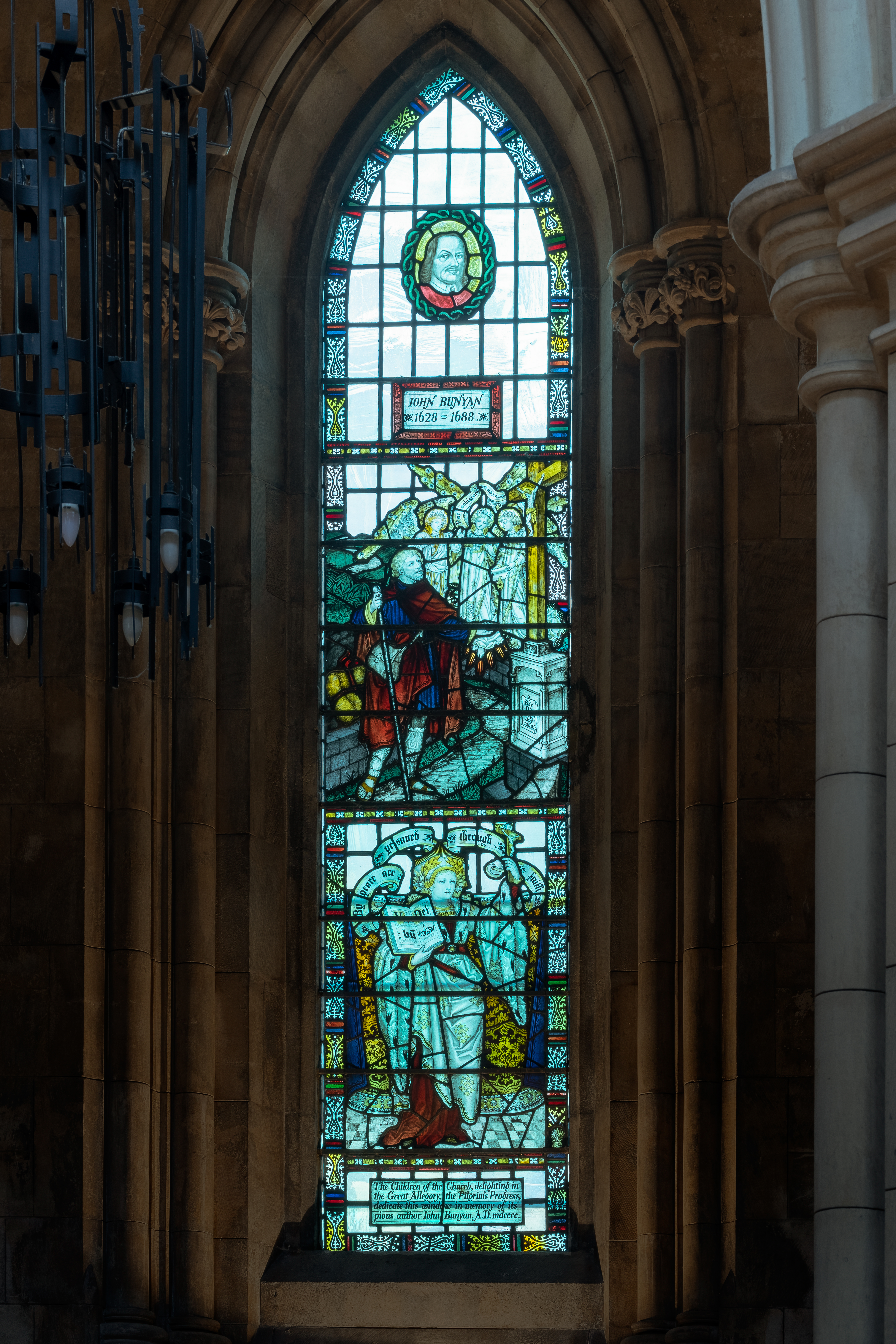
7. John Gower (1330-1408) friend of Chaucer and Court Poet to King Richard II and King Henry IV, is commemorated in a window immediately above his tomb. The tomb below the window is unique in bearing a full sized recumbent effigy of an English Court poet. His head rests on the three books for which he is best known, which were written in Latin, French and English.
The left light of the two-light window shows St John the Evangelist, Gower’s saintly namesake, with his symbols, the book and pen. The right light shows St Agnes with her symbols, the Palm and Lamb, referring to Agnes Groundulf whom Gower married in 1398 at the age of 68, when he lived in the Priory cloisters. In the tracery are their arms.
Maker: Charles Eamer Kempe 1920. The later Kempe mark, a wheatsheaf with Tower superimposed, is in the extreme left border.
Given in memory of Mark and Mary Winkley of this parish by their son Frederick James, sometime Alderman of Southwark.
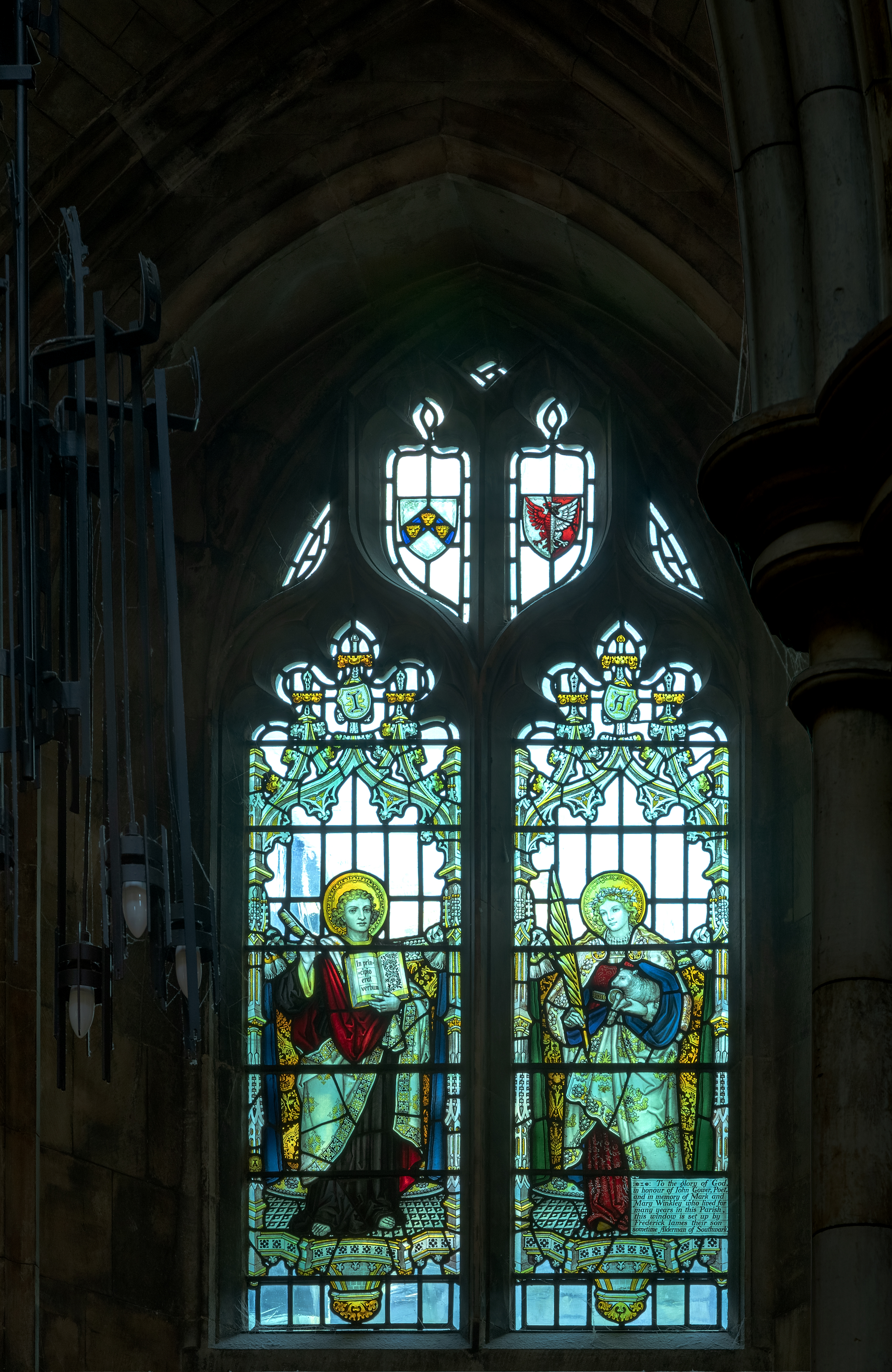
8. Geoffrey Chaucer (c.1340-1400), a contemporary and friend of John Gower, was a soldier, statesman, traveller and poet at the Court of King Richard II. He is best known as the author of ‘The Canterbury Tales’ about a group of pilgrims who set out from the Old Tabard Inn in Southwark for the shrine of Thomas Becket at Canterbury, passing the time by telling stories.
Maker: Charles Eamer Kempe 1900. Kempe’s maker’s mark, a wheatsheaf, is low in the right border.
Note: Below the medallion portrait of Chaucer are shown in wonderful detail the pilgrims leaving the Old Tabard Inn in Southwark. Saint Thomas Becket is also shown holding his Archbishop’s crozier while indicating the sword, the instrument of his martyrdom.
Given by A.W. Pigott, Commissioner-General, in honour of Chaucer and in memory of his own sister. The window was dedicated by the Poet Laureate Alfred Austin on the 500th anniversary of Chaucer’s death.
